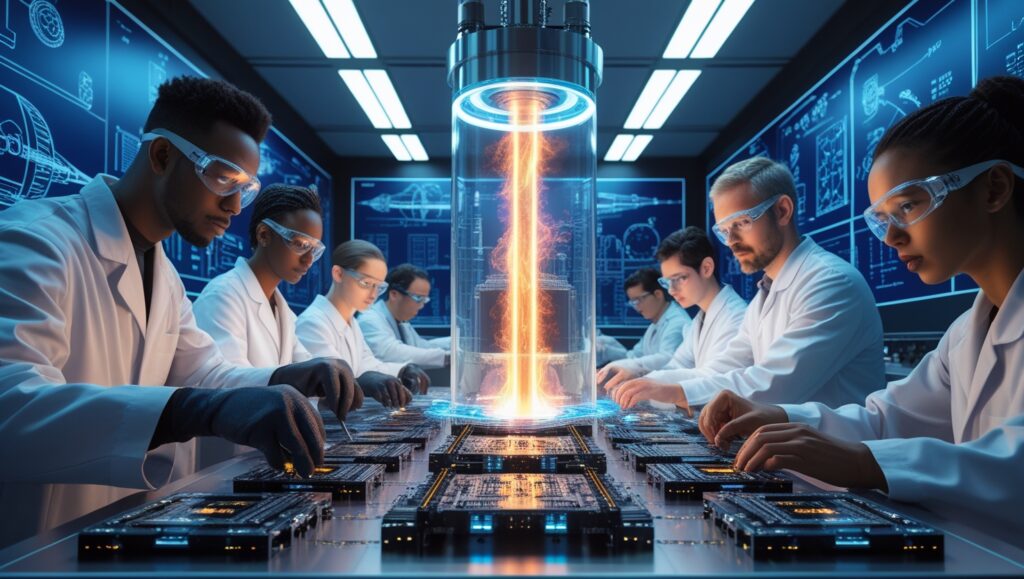
TL;DR:
- SOSV will fund over 25 plasma tech startups in five years.
- Plasma is seen as key to fusion energy, semiconductor innovation, and space propulsion.
- The initiative includes a new Hax lab in New Jersey with federal backing.
- Initial investments include YPlasma, tackling data center cooling and wind efficiency.
- Plasma could reshape fertilizer production, carbon capture, and advanced manufacturing.
Plasma’s Potential: From Fusion to Fertilizer
Global venture capital firm SOSV is placing a high-stakes bet on plasma technology, announcing plans to invest in 25+ plasma-focused startups over the next five years. The move marks a significant shift in deep tech funding, targeting plasma’s utility beyond its well-known role in nuclear fusion.
To accelerate these efforts, SOSV has partnered with the New Jersey Economic Development Authority and the Princeton Plasma Physics Laboratory, backed by the U.S. Department of Energy, to establish a new Hax innovation lab in New Jersey.
“There’s so much here. The best ideas have yet to come to unlock a lot of potential in the fusion space,”
— Duncan Turner, General Partner, SOSV
Investment Spotlight: Cooling Chips and Controlling Wind
While fusion power remains a natural application for plasma, SOSV’s approach goes much further. One of its early investments is YPlasma, a company using plasma actuators to cool data center chips and enhance airflow over wind turbine blades—potentially reducing both cooling costs and increasing energy output.
The startup is emblematic of plasma’s flexibility, from thermal management in data centers to aerodynamic efficiency in clean energy.
Space and Silicon: Emerging Applications
According to Turner, the real opportunity lies in using plasma as a high-precision tool in industries where it already exists, such as:
- Semiconductors: Plasma processes are already central to chipmaking. New methods could revolutionize materials etching, photolithography, and nanoscale fabrication.
- Space Propulsion: Plasma thrusters promise greater fuel efficiency, potentially transforming how satellites and space vehicles are powered.
- Industrial Chemistry: Startups are exploring plasma for converting CO2 into fuels and producing ammonia for fertilizer in a more sustainable way.
The Data
| Metric | Details |
| Total Plasma Startups SOSV Will Fund | 25+ over 5 years (SOSV) |
| Key Partners | NJEDA, DOE Princeton Lab |
| Key Startup Example | YPlasma – Plasma cooling for chips, airflow control for turbines |
| Target Industries | Nuclear fusion, semiconductors, space, chemicals |
| Advanced Plasma Use-Cases | Plasma thrusters, CO₂-to-fuel conversion, ammonia synthesis (Nature Catalysis) |
| Event Tie-in | TechCrunch Disrupt 2025 – Oct 27–29, 2025, San Francisco |
Why Now? Tech Ecosystem Readies for a Plasma Shift
The strategic timing of this investment wave reflects growing momentum in deep-tech venture funding and increased government support for climate tech and semiconductor resilience. With the semiconductor industry seeking novel fabrication methods and fusion firms racing to demonstrate net-positive energy, plasma provides the material and process innovation these domains require.
Furthermore, SOSV’s expanding Hax network—combined with federal collaboration—hints at a concerted push to anchor these breakthroughs in the U.S. innovation economy.
“Hundreds of Opportunities” Ahead
What started as a search for 25 promising plasma startups has led to the realization that there are “hundreds of viable companies” in this space, according to Turner. The firm is now actively scouting multidisciplinary teams leveraging plasma physics for global-scale applications—from energy to materials science.
The approach underscores a new VC thesis: tools like plasma can be transformative across sectors, not just niche solutions.






